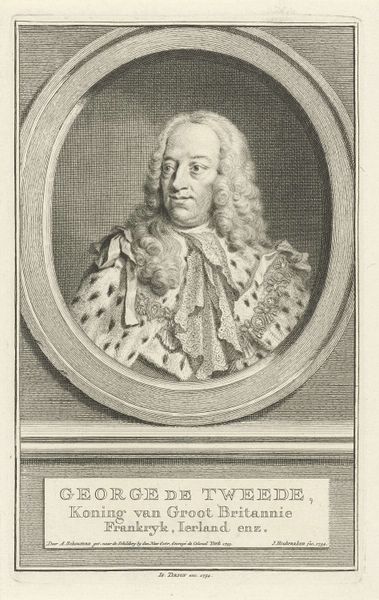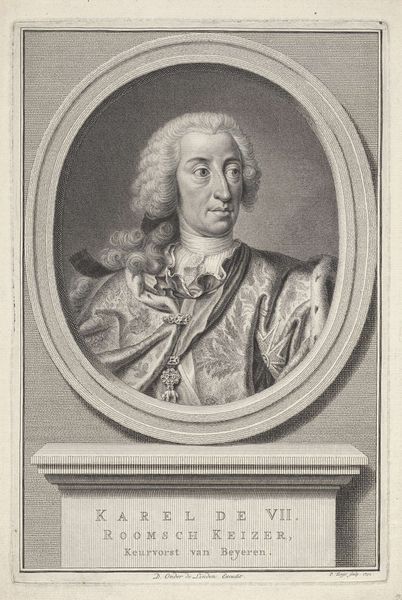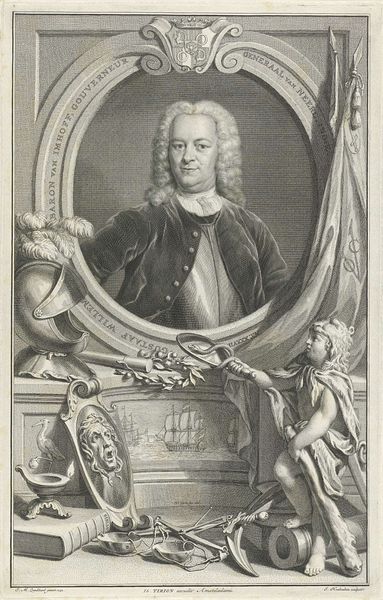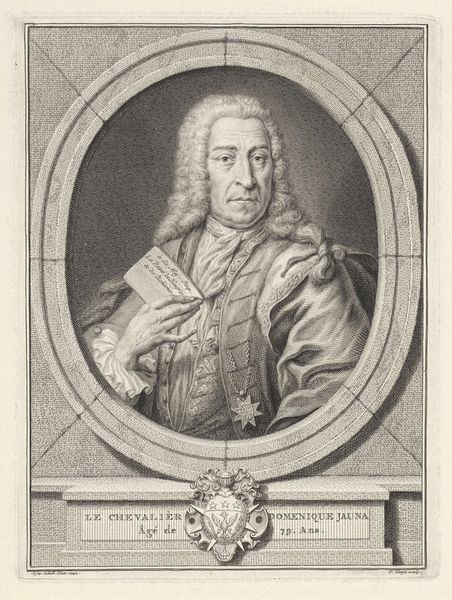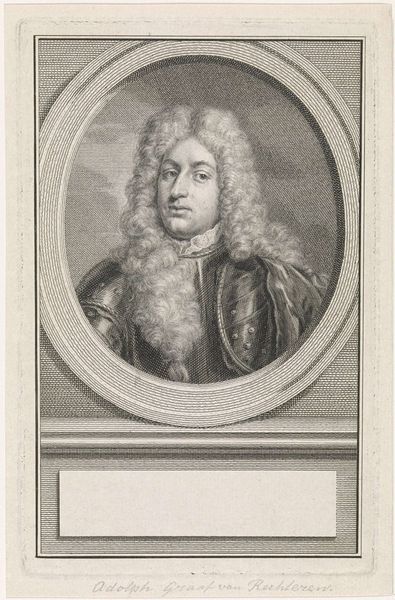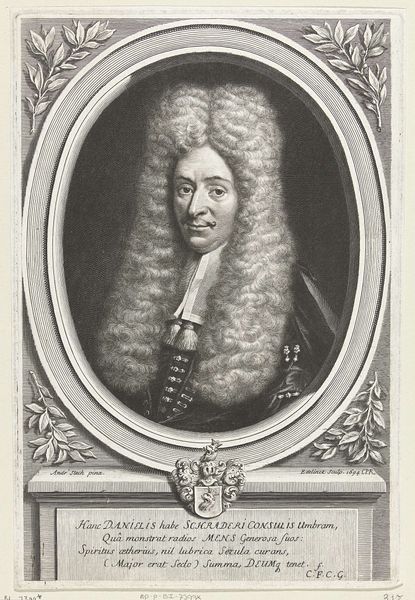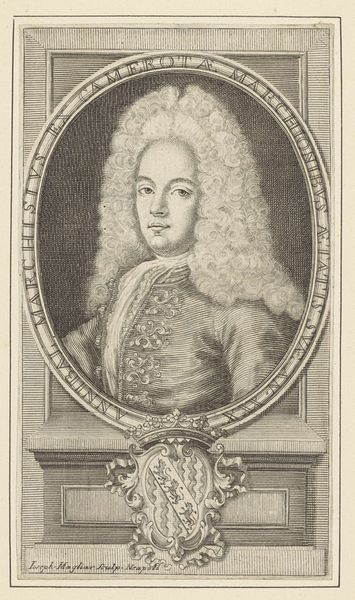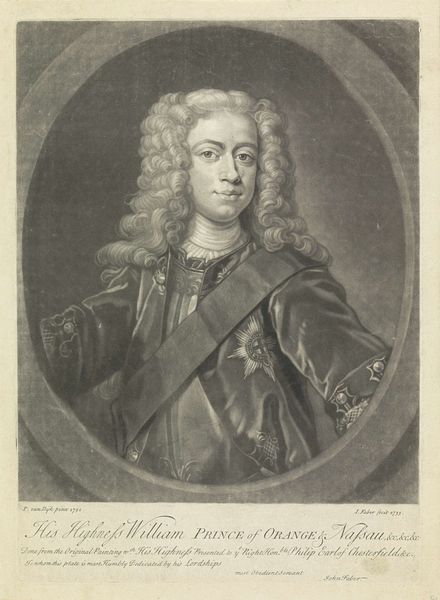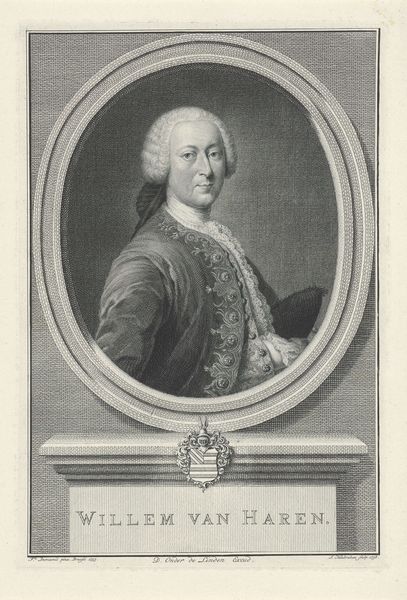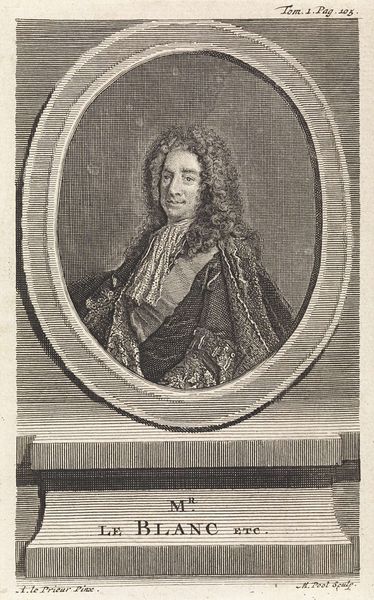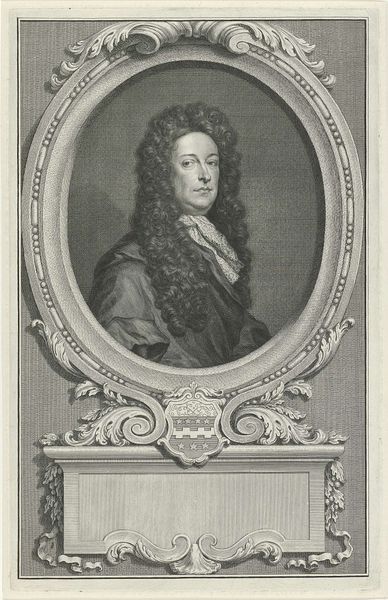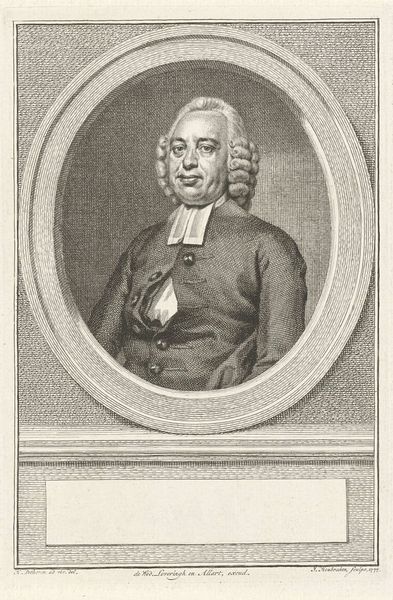
print, metal, engraving
#
portrait
#
baroque
# print
#
metal
#
15_18th-century
#
history-painting
#
engraving
Dimensions: height 269 mm, width 177 mm
Copyright: Rijks Museum: Open Domain
Editor: Here we have Pieter Tanjé's "Portrait of King George II of Great Britain," created in 1752. It's a print, an engraving on metal, and the detail is incredible! I can't help but notice how formal and stiff the portrait feels. What’s your take on it? Curator: This print speaks volumes about power, lineage, and the construction of identity in the 18th century. George II wasn’t just King of Great Britain, he was also an Elector of Hanover, a German Prince. The inscription highlights that duality, revealing the interwoven nature of European power structures. How might this portrait serve to legitimize his rule, both in Britain and on the continent? Editor: So, it's not just a likeness; it's a statement. Is there something about the artistic style? It's labelled "Baroque". Curator: Absolutely. The Baroque, with its emphasis on grandeur and ornamentation, was often used to project authority. Notice the wig, the sash, the elaborate frame. These are all visual cues that reinforce George II's status. How do these elements play into the narrative of British colonialism and the accumulation of wealth during this period? It's essential to ask, who is this portrait *for*, and what is it trying to achieve? Editor: I guess I hadn’t really considered the power dynamics embedded within what seemed like just a typical portrait. It's much more loaded than I initially thought! Curator: Indeed! By analyzing the context – the historical period, the subject's position, and the artistic conventions – we can unlock the complex layers of meaning embedded within this seemingly simple image and think about the ripple effects across the empire. Editor: It’s fascinating to think about art not just as art but as a document reflecting the political and social landscape of the time. I’ll never look at a portrait the same way again! Curator: And that’s the beginning of truly engaging with art's role in shaping our understanding of the past, and its lingering impact on our present.
Comments
No comments
Be the first to comment and join the conversation on the ultimate creative platform.
